On the first day of each month, before the dawn’s first light, the area around Akafuku Honten (main store) is very crowded. What are all these people waiting for? The famous Tsuitachi-mochi, of course!
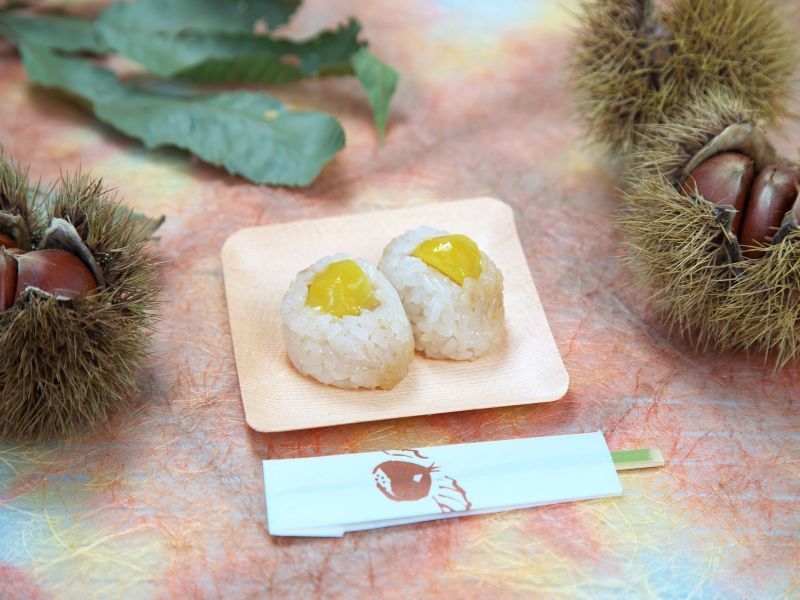
Akafuku-mochi is a bite size mochi (rice cake) topped with sweet red bean paste. This popular gourmet delicacy is produced by Akafuku, a traditional and authentic tea house which has been located in Okage Yokocho, on the banks of the Isuzu-gawa River near Ise Jingu Shrine since 1707. The tea house´s name comes from the Japanese saying “Sekishin Keifuku” meaning “wishing for people’s happiness,” and expressing the feeling of all pilgrims who visit Ise Jingu Shrine. In the Edo era (1603-1867), many Japanese people made the pilgrimage to Ise every year, turning the area into a bustling social and cultural hub.
Today, locals and tourists alike, enjoy strolling down the stone-paved streets of picturesque Okage Yokocho. You feel to be set back in time, experiencing a traditional Japan when it was ruled by the shogun Okage Yokocho. It is fun to admire authentic craftwork, hunt for your perfect souvenir among an enormous variety, select your favorite dish from an impressive array of Japanese cuisine, or enjoy a delicious mochi in the traditional Akafuku teahouse.
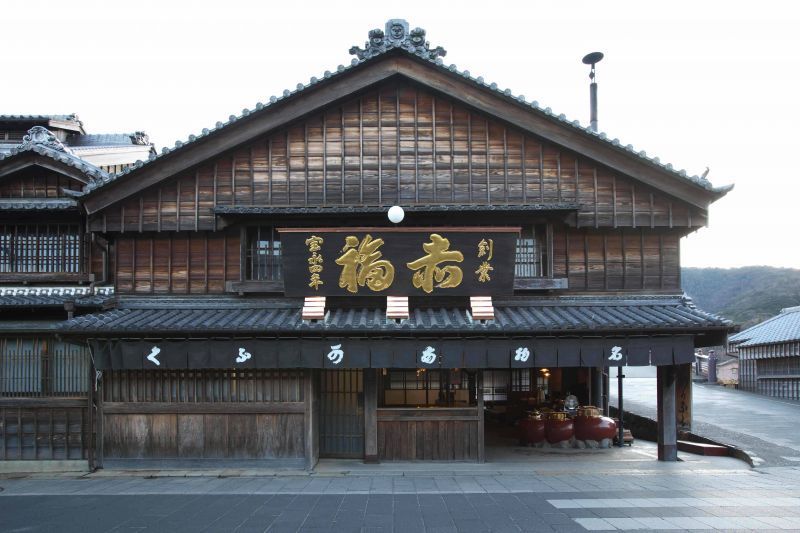
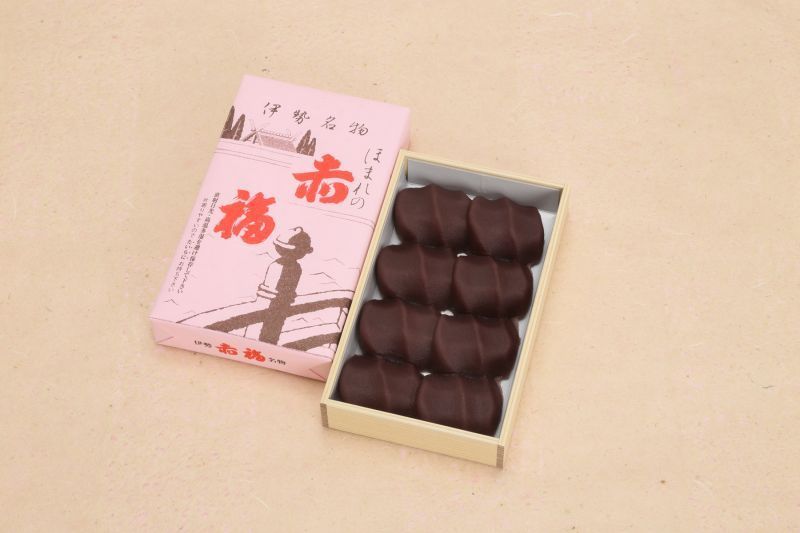
One Lucky Charm per Month, reflecting the season!
The first day of the month is called “tsuitachi” in Japanese, when people in Ise customarily rise early for a visit to the shrine, to offer thanks for the previous month and to pray for good fortune in the future. This custom is referred to as “Tsuitachi Mairi,” meaning a pilgrimage on the first day of the month. To welcome these pilgrims of Tsuitachi Mairi, Akafuku started producing a special seasonal rice cake available only on the first of every month except January. Since the recipe changes monthly to reflect the season, each of the 11 Tsuitachi-mochi can only be enjoyed once a year.
Cherry blossoms of April are celebrated in the springtime with “Sakura-mochi,” made of pale pink mochi-gome (sticky rice) stuffed with red bean paste, and wrapped in cherry tree leaves. The “Yuki-mochi” of December is dusted with white rice cake powder reminiscent of the seasonal snowfall. However, among the 11 varieties, the three most popular are “Takenagashi” (bamboo-mochi) of July, “Hassaku Awa-mochi” (millet rice cake) of August, and Chestnut-mochi of October, “Kurimochi.”
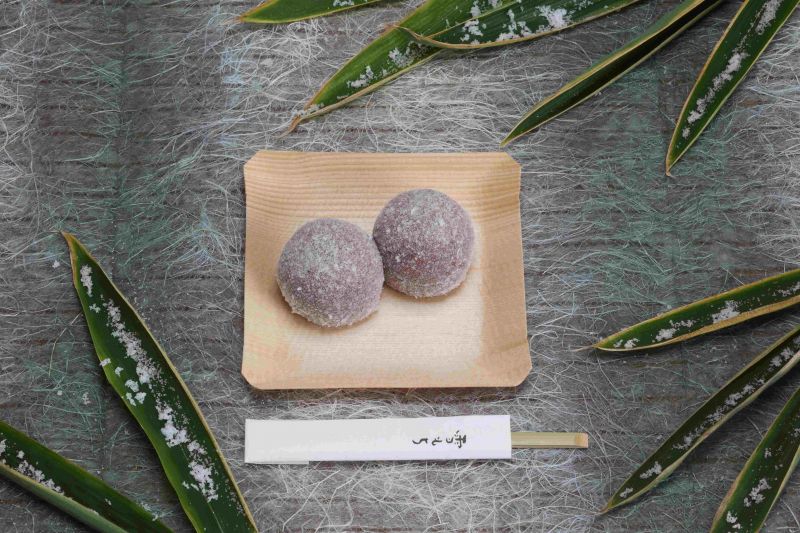

Takenagashi, meaning “bamboo flow,” is a summer treat made with red beans called “mizu yokan”. It is poured into bamboo stalks, and then covered in bamboo leaves. It is best eaten chilled and is a good remedy for the scorching heat of July.
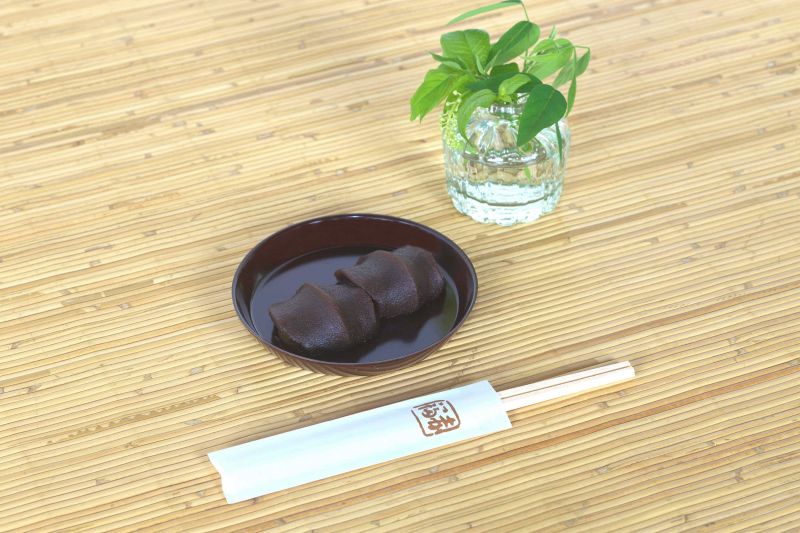
Since ancient times, the first ears of rice and millet have been offered to the gods to show gratitude for a bountiful harvest. This tradition is said to be the origin of the Japanese summer gift-giving custom known as “O-chugen.” In ancient times people gave the gift of new grains. In reference to this history, Akafuku has created an August mochi which is made with millet and topped with brown sugar flavored paste.
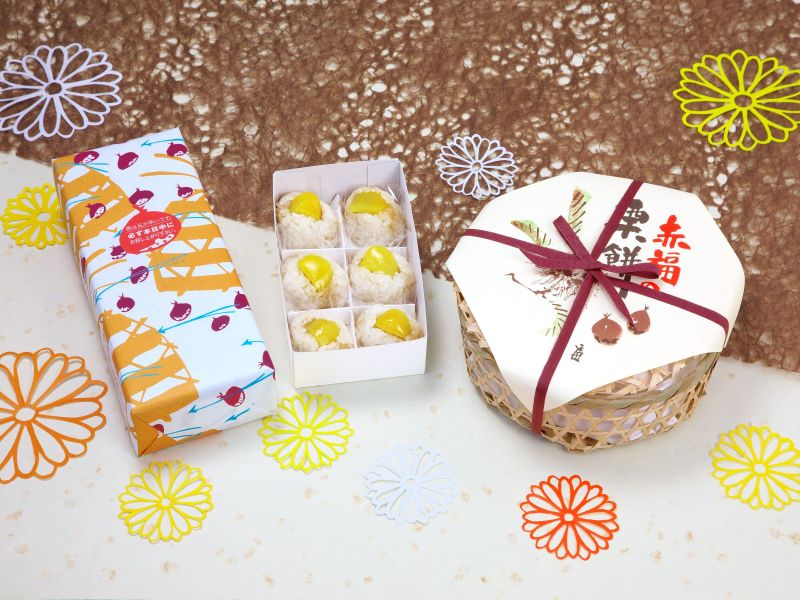
In October, “Choyo no Sekku”, the most important of Japan’s five seasonal festivals is held. In this merry celebration, people gather, drink sake decorated with chrysanthemum petals, and eat chestnut flavored delicacies. Continuing this tradition, the October Tsuitachi-mochi is made with chestnut flavored paste, wrapped in mochi-gome and topped with a sweetened chestnut.

Throughout the rest of the year, visitors to the area can enjoy the classic Akafuku-mochi, with its distinctive three ridges symbolizing the current of the Isuzu-gawa River. Mie Prefecture is famous for its farm-to-table concepts, preserving the traditional culinary culture, environment, and way of life of the locals.
The treats from this tea house are free of preservatives or artificial colors, made with mochi-gome (sticky rice) from exclusive farms in Japan, and accompanied by sweet paste made with red adzuki beans grown in Hokkaido.
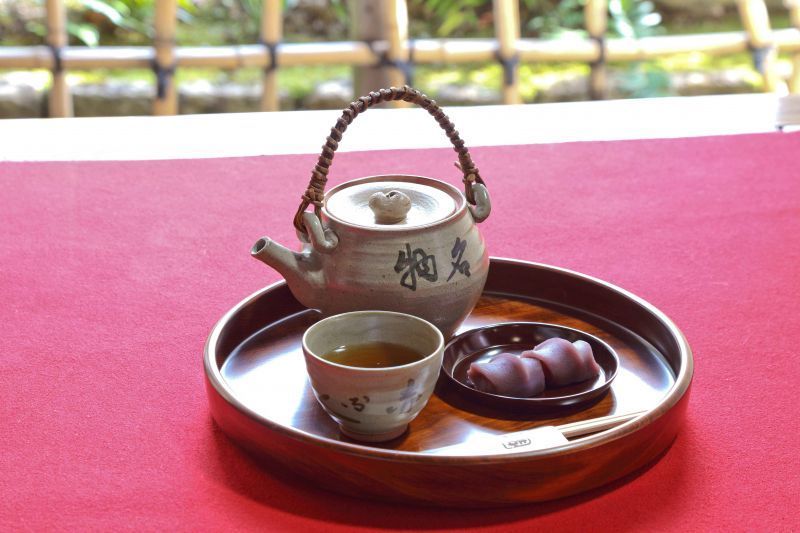
Ise is known as “the home of the Japanese soul,” and through the years Akafuku-mochi has earned its place as a soul food of Mie.
Try it, you will not only love it but it will lift your spirit and warm your heart!
So, what are you waiting for?
Visit Grand Ise Shrine, Japan´s most secret shrine, spend some time wandering Oharaimachi and Okage Yokocho, treat yourself with a delicious Akafuku-mochi before teeing it up on Nemu Golf Club for a highly memorable day in Mie!
Images©RenWong I Mie Prefecture Tourism Federation